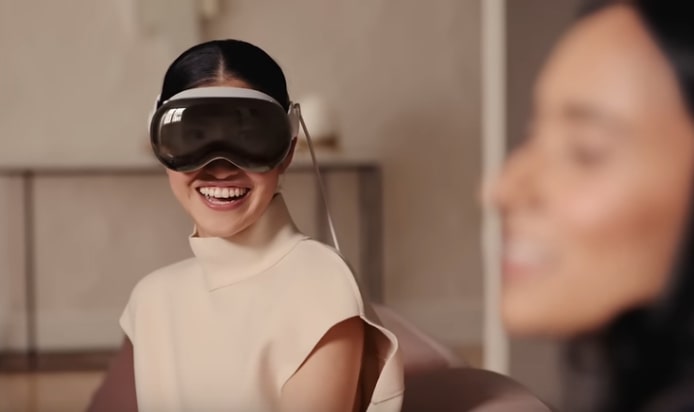The Metaverse Welcomes Apple: Vision Pro Augmented Reality Headset Unveiled

Tech giant Apple has rocked the world with the news of an augmented reality headset that promises to seamlessly blend the digital with the real world.
Apple’s announcements are always highly-anticipated events, and this one did not disappoint.
“The era of spatial computing is here,” said CEO Tim Cook describing the Apple Vision Pro – a headset that can switch between augmented and fully virtual reality.
Per the website, the product should be available early next year in the USA for users over 13 years old. According to the Verge, the price will start at $3,499.
The device can last two hours on battery and all day if plugged in.
Apple claims that the Vision Pro protects users’ privacy via existing Apple privacy and security features and new technologies like Optic ID, an authentication system that utilizes the uniqueness of one’s iris.
Notably, one can easily argue that the launch of Apple’s new headset is likely to reignite interest in the metaverse.
VisionOS
The apps are not limited to a screen, so they “live in your space,” said the company. The headset will allow users to view both the real world and the apps within that space.
They will also see and be able to interact with anybody else in the room.
As there are no controls, people will use their fingers, eyes, and voice to navigate, customize, and select apps, as well as to scroll and dictate.
These spatial experiences look, sound, and feel as if they are physically there, the company claims, adding that:
“This is visionOS, Apple’s first-ever spatial operating system.”
Users can also connect to their Mac laptops just by looking at the screen, after which they can move that screen to form a large display outside the computer and within the user’s space.
Furthermore, the headset acts as “a 3D camera” that captures photos and videos.
When it comes to entertainment, the spatial-audio experience surrounds the viewer and allows them to make adjustments to the size of the screen. Additionally, viewers can create a different environment around them for an enhanced viewing experience.
Besides entertainment – for relaxation purposes, for example – the headset allows for the space to be transformed, meaning that the experiences through the Vision Pro can fill in the space around the user.
The company also promoted the headset as an excellent way to play video games, requiring the player only to connect their controller to the Vision Pro.
For the workers, it said, the headset can provide a “perfect” workspace, enabling easy access to the Internet, simple browsing, creating and completing tasks, and communicating with colleagues.
More Than 4K TV for Each Eye
According to the announcement,
“We built a micro-OLED display system that fits 64 pixels in the same amount of space as a single iPhone pixel. And packs 23 million into two panels the size of a postage stamp. That’s more than a 4K TV for each eye.”
Vision Pro is made of a piece of three-dimensionally formed laminated glass, an aluminum alloy frame that curves in order to wrap around the face, twelve cameras, and five sensors.
The headset is also meant to be adjustable.
There is a dual-chip design: one runs visionOS among other tasks, while the other process input from the cameras, sensors, and microphones.
It is said that Vision Pro has been in the works for years now, delayed several times, and put through several iterations.
It is safe to say that many are excited for the headset to come out, but it remains to be seen if it will fulfill the expectations.
____
Learn more:
– As Apple Announces its New VR Headset This Crypto Startup is Creating a Decentralized Freelancer Ecosystem on the Metaverse – Here’s How it Works
– Apple Will Remove The Bitcoin Whitepaper From Macbooks in The Next Update – Here’s Why
– Meta and BMW Partner to Create AR and VR Experiences for the Passenger Seat – Is the Metaverse Making a Comeback?
– How Augmented Reality Can Humanise the Metaverse
– What is the Metaverse?
– Metaverse Guide: Signing Up To Decentraland




